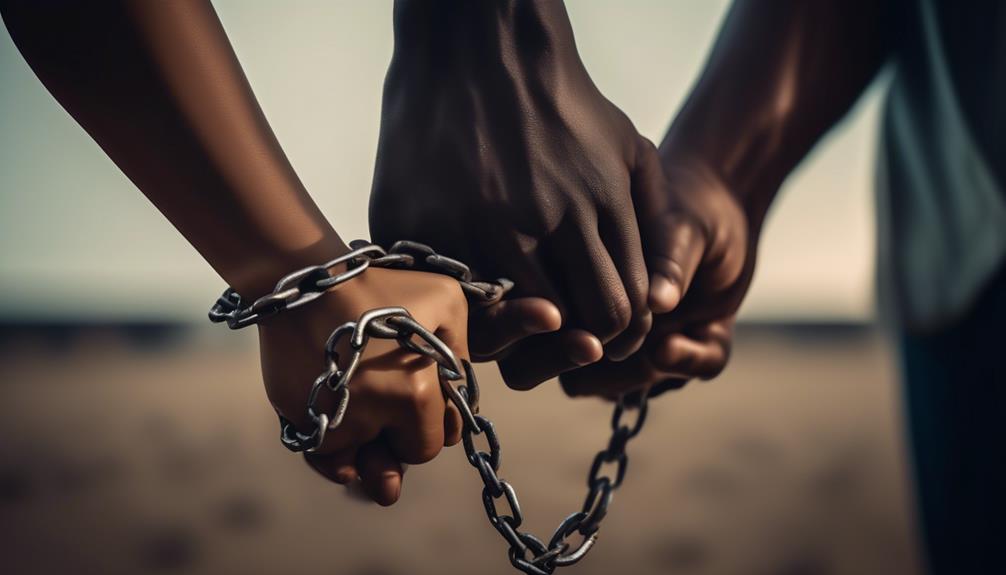Overcoming Boundary Challenges in Multi-Cultural Relationships

When it comes to multi-cultural relationships, there are often unique challenges that arise, particularly when it comes to setting and respecting boundaries. However, with open communication and a willingness to understand and accept different cultural perspectives, these challenges can be overcome. Here are some tips for navigating boundary challenges in multi-cultural relationships:
- Recognize and discuss cultural differences: It's important to acknowledge and understand that different cultures may have different values, norms, and expectations when it comes to personal boundaries. Take the time to have open and honest conversations about these differences, and try to find common ground that respects both partners' cultural backgrounds.
- Establish clear communication: Open and effective communication is key in any relationship, but it is especially important in multi-cultural relationships. Clearly express your needs, boundaries, and expectations, and encourage your partner to do the same. This will help prevent misunderstandings and potential conflicts.
- Be open-minded and flexible: In multi-cultural relationships, it's essential to be open-minded and willing to learn from each other's cultures. Be willing to adapt and compromise when it comes to certain boundaries that may clash with your partner's cultural practices. This doesn't mean sacrificing your own values, but rather finding a balance that respects both perspectives.
- Seek support and advice: If you're facing challenges with boundaries in your multi-cultural relationship, don't hesitate to seek support and advice from trusted friends, family members, or even professional counselors. They can provide insights and suggestions based on their own experiences or expertise.
- Practice empathy and understanding: It's crucial to approach boundary challenges in multi-cultural relationships with empathy and understanding. Try to put yourself in your partner's shoes and consider how their cultural background may influence their perspective on boundaries. By doing so, you can foster a more compassionate and respectful relationship.
Remember, overcoming boundary challenges in multi-cultural relationships requires patience, understanding, and a commitment to open and honest communication. With these tips, you can navigate these challenges and build a strong and harmonious relationship with your partner.
Key Takeaways
- Recognizing and understanding cultural differences is crucial in multi-cultural relationships.
- Clear communication, including expressing needs and boundaries, is essential to prevent misunderstandings and conflicts.
- Being open-minded and flexible, willing to learn from each other's cultures and finding a balance, is important in navigating boundary challenges.
- Seeking support, advice, and guidance from trusted sources can help overcome obstacles and address boundary challenges effectively.
Understanding Cultural Differences
Understanding cultural differences is crucial in navigating the challenges that arise in multi-cultural relationships. In today's interconnected world, cross-cultural communication has become a necessity. It involves the ability to interact effectively with people from different cultural backgrounds, understanding their beliefs, values, and norms. Cultural sensitivity plays a vital role in establishing meaningful connections and fostering innovation within these relationships.
To foster cross-cultural communication, it's important to be aware of and respect cultural differences. This requires actively listening, asking open-ended questions, and showing genuine interest in understanding the other person's perspective. By doing so, you create a safe space for dialogue, where both parties feel heard and valued. Building cultural sensitivity involves recognizing and challenging our own biases and assumptions, allowing us to better understand and appreciate different cultural practices.
Cultural differences can lead to misunderstandings and conflicts in multi-cultural relationships. However, by developing a deep understanding of cultural differences, individuals can navigate these challenges more effectively. This understanding allows for the development of strategies to bridge gaps in communication and find common ground. It also promotes empathy, which is essential for building trust and fostering collaboration.
Communication Breakdowns
Communication breakdowns in multi-cultural relationships can often arise due to language barriers and the misinterpretation of gestures. These challenges can lead to misunderstandings, frustration, and even conflicts between partners.
It's important to be aware of these potential issues and to find effective ways to bridge the communication gap. One way to do this is by using clear and simple language, avoiding complex phrases or slang that may be difficult to understand.
Another helpful strategy is to seek clarification when needed. If something is unclear or confusing, it's important to ask for more information or explanation. This can help prevent misunderstandings and ensure that both partners are on the same page.
Finally, it's crucial to be open to learning about different cultural communication norms. Every culture has its own unique ways of expressing thoughts and emotions, and being aware of and respectful towards these differences can go a long way in improving communication.
Language Barriers
Navigating a multi-cultural relationship can present various challenges, and one particularly prevalent issue is the breakdown in communication caused by language barriers.
Language acquisition plays a crucial role in bridging this gap, as it enables individuals to understand and express themselves effectively. However, learning a new language can be a time-consuming and complex process.
To address this challenge, innovative translation services have emerged, offering real-time language assistance. These services utilize advanced technologies, such as artificial intelligence and machine learning, to provide accurate and efficient translations.
By leveraging these tools, individuals in multi-cultural relationships can overcome language barriers and enhance their communication. This not only fosters understanding and empathy but also promotes a sense of inclusivity and equality in the relationship.
Language barriers need not hinder the growth and development of multi-cultural relationships when innovative solutions are readily available.
Misinterpretation of Gestures
To further explore the challenges of multi-cultural relationships, we now turn our attention to the potential misinterpretation of gestures, which can lead to communication breakdowns. Cultural misunderstandings can arise when different cultures have different interpretations of nonverbal communication. Here are four reasons why misinterpretation of gestures can occur:
- Cultural norms: Gestures that are considered polite in one culture may be offensive or inappropriate in another culture. This can lead to confusion and misunderstanding.
- Body language variations: Different cultures have different ways of expressing emotions through body language. What may be seen as a sign of happiness in one culture may be seen as a sign of anger in another culture.
- Contextual differences: Gestures can have different meanings depending on the context in which they're used. Without understanding the cultural context, misinterpretation is likely to occur.
- Stereotypes and assumptions: Preconceived notions and stereotypes about certain gestures can lead to misinterpretations. It's important to approach gestures with an open mind and avoid making assumptions.
To overcome these challenges, it's crucial to educate oneself about different cultural norms and nonverbal cues. Open and honest communication is key in avoiding misinterpretation and fostering understanding in multi-cultural relationships.
Conflicting Values and Beliefs
Conflicting values and beliefs can often pose significant challenges in multi-cultural relationships, requiring individuals to navigate through complex differences and find common ground. In a world that's increasingly connected, cultural assimilation is no longer the only solution. Instead, couples are encouraged to find ways to compromise and adapt to each other's values and beliefs.
To overcome these challenges, it's important to approach conflicting values and beliefs with an open mind and a willingness to understand. Both partners should be willing to listen and learn from each other's perspectives, recognizing that their own cultural background isn't the only valid one. This requires a sense of empathy and a deep respect for each other's heritage.
Finding common ground often involves finding shared values and beliefs that can serve as a foundation for the relationship. This may require a process of negotiation and compromise, where both partners are willing to make adjustments and find a middle ground that respects both cultural backgrounds.
In addition, it's important to cultivate an environment of mutual understanding and acceptance. Both partners should be encouraged to express their beliefs and values without fear of judgment or rejection. This creates a safe space for open and honest communication, allowing for a deeper understanding of each other's perspectives.
Balancing Traditions and Modernity
When it comes to balancing traditions and modernity in multi-cultural relationships, cultural clashes often arise as individuals navigate their own expectations and the expectations of their partner. These clashes can stem from differences in values, beliefs, and practices, leading to conflicts and misunderstandings.
It's important for couples to find a middle ground where they can respect and embrace each other's traditions while also embracing the modern world they live in.
Cultural Clashes
Balancing the clash between cultural traditions and modernity poses a significant challenge in multi-cultural relationships. In today's rapidly changing world, the collision between long-standing cultural practices and the desire for innovation can lead to conflicts and misunderstandings. To navigate this delicate balance, it's crucial to consider the following:
- Cultural adaptation: Both partners must be willing to adapt and embrace aspects of each other's cultures. This requires open-mindedness, flexibility, and a genuine interest in learning about different traditions.
- Bridging cultural gaps: Effective communication is key to bridging the gaps between different cultural backgrounds. It's important to establish a safe space where both partners can express their perspectives without judgment or criticism.
- Finding common ground: Identifying shared values and interests can help create a sense of unity and understanding, even when cultural practices differ. Emphasizing similarities can foster a stronger connection and minimize conflicts.
- Seeking professional help: In some cases, seeking guidance from a relationship counselor or therapist who specializes in multi-cultural relationships can provide invaluable support and guidance.
To navigate the clash between cultural traditions and modernity in multi-cultural relationships, it's essential to navigate the expectations surrounding balancing traditions and modernity. Managing disappointments and adjusting expectations are key aspects of striking a balance between the old and the new.
In a world that's rapidly evolving, it's important for couples in multi-cultural relationships to recognize that both partners may have different expectations based on their cultural backgrounds. This requires open and honest communication, as well as a willingness to compromise.
It's crucial to understand that traditions can be cherished and celebrated, while also being open to embracing modern values and practices. By finding a middle ground and being flexible in adapting to each other's expectations, couples can navigate the complexities of cultural traditions and modernity in their relationship.
Navigating the expectations of family members can be a complex task in multi-cultural relationships. When different cultural backgrounds come together, family dynamics can be further complicated by the clash of traditions, values, and beliefs. However, with open communication and a willingness to understand and compromise, you can successfully navigate these challenges.
Here are four strategies to help you navigate family expectations in a multi-cultural relationship:
- Seek Understanding: Take the time to learn about your partner's cultural background, traditions, and values. This will allow you to better understand where their family's expectations come from and why they hold them.
- Communicate Boundaries: Clearly communicate your own boundaries and expectations to your partner and their family. Be open and honest about what's important to you, while also respecting their cultural practices.
- Find Common Ground: Look for common values and shared goals that can bridge the cultural divide. Focus on building connections and finding compromises that respect both families' traditions.
- Set Realistic Expectations: Understand that it may take time for both families to adjust and accept each other's cultural differences. Be patient and flexible as you navigate these challenges together.
Overcoming Language Barriers
When different cultural backgrounds come together in multi-cultural relationships, one of the challenges that may arise is overcoming language barriers. Cross-cultural communication plays a crucial role in fostering understanding and connection between individuals from diverse linguistic backgrounds.
Language exchange programs can be a valuable tool for overcoming these barriers and promoting effective communication.
Language exchange involves the mutual learning of each other's languages, allowing individuals to improve their proficiency while also gaining insight into each other's cultures. This process promotes empathy, cultural understanding, and a deeper connection between partners. By actively engaging in language exchange, you can bridge the gap created by language barriers and enhance the overall quality of your relationship.
Furthermore, language exchange fosters innovation and creativity within multi-cultural relationships. It encourages you to think outside the box and find innovative ways to communicate and connect. This process can lead to the development of unique communication styles and strategies that are tailored to your specific relationship. Embracing these innovative approaches not only strengthens your bond but also sets a precedent for open-mindedness and adaptability in your relationship.
Resolving Conflict in a Multi-Cultural Context
Conflict resolution in a multi-cultural context requires a nuanced understanding of cultural differences and effective communication strategies. When resolving conflicts in a multi-cultural context, it's important to consider the following strategies:
- Building empathy and understanding: Take the time to understand the cultural background, values, and beliefs of the individuals involved in the conflict. This will help you gain insight into their perspectives and motivations, fostering empathy and understanding.
- Active listening: Actively listen to the concerns and viewpoints of all parties involved. Give each person an opportunity to express themselves without interruption, and validate their feelings and experiences.
- Seek common ground: Look for areas of shared values or interests that can serve as a foundation for resolving the conflict. Finding common ground helps bridge cultural gaps and promotes mutual understanding.
- Adapt communication styles: Recognize that different cultures may have unique communication styles and norms. Be willing to adapt your communication approach to better align with the cultural context, ensuring effective and respectful communication.
Embracing and Celebrating Diversity
Embracing and celebrating diversity is essential for fostering inclusivity and creating a culturally rich and vibrant environment. In a world that's becoming increasingly interconnected, cultural integration is crucial for individuals and societies to thrive. By embracing diversity, we open ourselves up to new perspectives, ideas, and experiences that can lead to innovation and growth.
When we embrace diversity, we create an environment where everyone feels valued and included. This fosters a sense of belonging and encourages individuals to bring their unique talents and viewpoints to the table. By celebrating diversity, we recognize and appreciate the richness that different cultures bring to our lives. This not only enhances our own understanding of the world, but also promotes empathy and understanding among different communities.
Furthermore, embracing diversity can lead to the creation of innovative solutions to complex problems. When people from different backgrounds come together, they bring with them a diverse range of experiences, knowledge, and skills. This diversity of thought can spark creativity and generate unique ideas that may not have been possible without cultural integration.
Frequently Asked Questions
How Can Cultural Differences Affect the Dynamics of a Multi-Cultural Relationship?
Cultural differences can impact multi-cultural relationships by creating misunderstandings and conflicts. However, by understanding cultural norms, building empathy, and cultivating tolerance, you can overcome these challenges and foster a stronger, more enriching relationship.
What Are Some Common Communication Breakdowns That Occur in Multi-Cultural Relationships?
Language barriers and misinterpretation of gestures and body language are common communication breakdowns in multi-cultural relationships. These challenges can hinder understanding and create tension, but with patience and open-mindedness, they can be overcome.
How Can Conflicting Values and Beliefs Impact the Stability of a Multi-Cultural Relationship?
Conflicting values and beliefs can have a significant impact on the stability of a multi-cultural relationship. When partners hold different perspectives, it can lead to misunderstandings, disagreements, and ultimately strain the foundation of the relationship.
What Strategies Can Be Used to Balance Traditions and Modernity in a Multi-Cultural Relationship?
To balance traditions and modernity in a multi-cultural relationship, you must navigate cultural expectations while maintaining your individual identity. Find innovative ways to merge customs and embrace change for a harmonious partnership.
Navigate family expectations in multi-cultural relationships by open communication, understanding, and cultural compromises. Analyze and address each family's traditions, values, and expectations, seeking innovative ways to blend them harmoniously.










